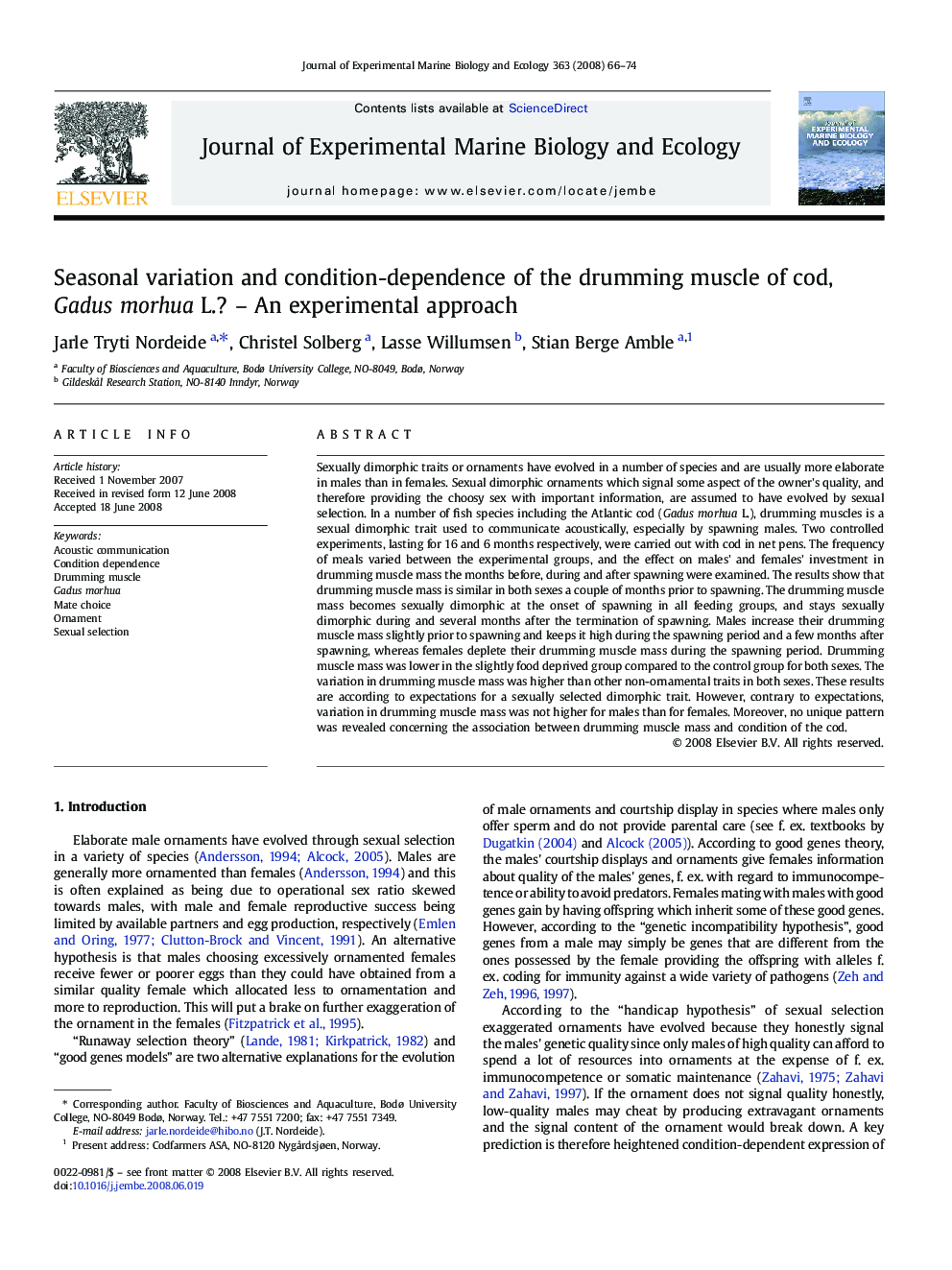| Article ID | Journal | Published Year | Pages | File Type |
|---|---|---|---|---|
| 4397277 | Journal of Experimental Marine Biology and Ecology | 2008 | 9 Pages |
Sexually dimorphic traits or ornaments have evolved in a number of species and are usually more elaborate in males than in females. Sexual dimorphic ornaments which signal some aspect of the owner's quality, and therefore providing the choosy sex with important information, are assumed to have evolved by sexual selection. In a number of fish species including the Atlantic cod (Gadus morhua L.), drumming muscles is a sexual dimorphic trait used to communicate acoustically, especially by spawning males. Two controlled experiments, lasting for 16 and 6 months respectively, were carried out with cod in net pens. The frequency of meals varied between the experimental groups, and the effect on males' and females' investment in drumming muscle mass the months before, during and after spawning were examined. The results show that drumming muscle mass is similar in both sexes a couple of months prior to spawning. The drumming muscle mass becomes sexually dimorphic at the onset of spawning in all feeding groups, and stays sexually dimorphic during and several months after the termination of spawning. Males increase their drumming muscle mass slightly prior to spawning and keeps it high during the spawning period and a few months after spawning, whereas females deplete their drumming muscle mass during the spawning period. Drumming muscle mass was lower in the slightly food deprived group compared to the control group for both sexes. The variation in drumming muscle mass was higher than other non-ornamental traits in both sexes. These results are according to expectations for a sexually selected dimorphic trait. However, contrary to expectations, variation in drumming muscle mass was not higher for males than for females. Moreover, no unique pattern was revealed concerning the association between drumming muscle mass and condition of the cod.
